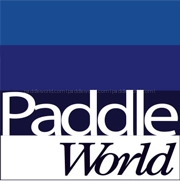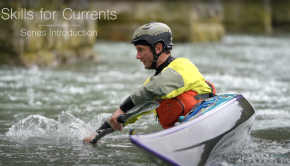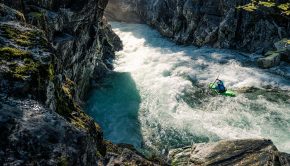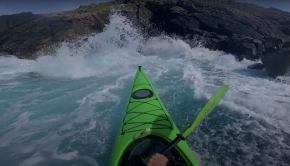Tips – Tackling Crossings
Pulling from more than twenty years of paddling and boat design experience, Nigel Foster shares with us a variety of tips and technical skills that will make our sea kayaking and touring trips easier and more enjoyable. In this column, Nigel provides some basic strategies to stay on track when making crossings in open water.
Paddling close to shore is fun, but sometimes the shore you really want to visit is just across that stretch of open water. Crossing open water exposes you to the forces of wind, current and tide, but you might not notice you are being swept off course. Here are some simple ways to gauge your progress, and some simple strategies to allow for the elements.
The simplest crossing
First we’ll assume there is no current, and no wind. If you point your bow toward a fixed object on the other side and keep paddling you should travel straight to it, while your compass bearing would remain the same all the way across. However, if you made the same crossing with the wind blowing from one side, you’d actually paddle in a curve. Although you’d still aim at the same target the whole time, you would eventually be paddling into the wind to reach it. Your compass bearing would gradually change throughout the crossing as you were pushed downwind.
Compensating for wind using transits
You can compensate for the wind by selecting a second fixed object that is in line with, either closer to you or further away than the first. Keep the two objects in line as you cross the lake and you’ll follow your original straight line whether there is wind or not. If there is wind, you’ll automatically adjust to aim a little into the wind, otherwise your two objects will slide out of alignment. Keeping the objects in line is called keeping a transit. It is the simplest method of making a straight crossing in variable conditions, and is particularly useful because it does not require you to carry any extra equipment. You can also use a transit to the side in a slightly different way, to confirm that you are making progress against a headwind. You would normally expect the closer object to drop behind the more distant one if you are moving forward. If two transit marks remain in line to the side, it means you are not moving forward!
Another way to adjust for the wind
As useful as transits are, if you ferry-glide across the wind you will actually paddle further than the straight line distance and use more energy. That extra effort is used to counter the wind. You can reduce that effort if you start your crossing at a point upwind, and paddle a course parallel to the one with the transits. While you cross, the wind will gradually blow you sideways until in the last few yards you’ll see the transit marks finally come into line. To do this you’ll need to use a compass, and even so, your accuracy depends on whether you know how much your kayak drifts in the wind, and exactly how strong the wind is. But accuracy aside, you will reduce your workload by starting your crossing a bit upwind and paddling a compass course. If your original transit marks come into line before you finish your crossing, you can use them to prevent further downwind drift. If you don’t get blown far enough during the crossing, you can simply drift with the wind at your back to finish.
Allowing for tide
This technique works best when you can predict the forces; that’s why it’s a good technique for crossing tidal water. Calculate the speed and direction of the tide during your crossing, and you can calculate how far and in which direction the tide will carry you in the time you expect to take paddling from A to B. Start your trip that distance upstream, and you should more or less eliminate the extra paddling you’d need to do if you were to ferry-glide across. Alternatively, time your crossing to span the period of slack water, so the distance the tide carries you in one direction prior to slack roughly equals the distance it carries you in the other direction after slack.
Awareness is the key!
Ultimately good kayak navigation is about awareness. You can use transits to guage your progress in almost any situation, not just on crossings, and that will increase your awareness of wind, tide and your position and progress. By devising strategies to minimize the adverse effect of the elements you can make your everyday paddling easier and more fun.
 More info on Nigel Forster adventures, books, and designs visit: www.nigelkayaks.com
More info on Nigel Forster adventures, books, and designs visit: www.nigelkayaks.com






